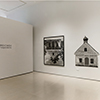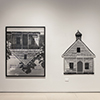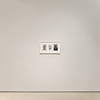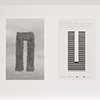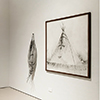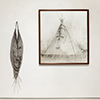Archival Correspondents Click on images to view project. |
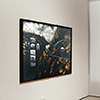 |
 |
|||||||
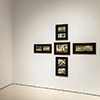 |
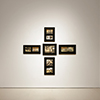 |
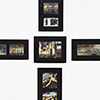 |
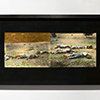 |
|||||
Archival Correspondents [From the press release] McClain Gallery is thrilled to announce Elaine Reichek: Archival Correspondents, an exhibition that highlights examples of the artist’s research-based and material approach to photography throughout her career. For more than five decades, Reichek has been engaged in a critical and feminist re-reading of a wide variety of historical images and texts. Presenting six works made between 1981 and 1995, Archival Correspondents traces her conceptual approach to combining photographic processes with traditional “craft” techniques such as knitting and hand-coloring. This exhibition is the second of our two presentations for FotoFest 2022. Reichek has always worked with pre-existing images rather than as a practicing photographer. Nonetheless, as a formally trained painter using craft mediums in the 1980s and ’90s, Reichek was particularly attentive to the materiality of photography and how it could be accentuated, altered, or recontextualized with other mediums. An early example of this is World Trade Center (Grey), a small three-part work from 1981 that is structured by a chain of associative logic. The first panel features a doll-sized pair of knitted pants; the second inverts the tiny trousers and diagrams them as knitting instructions; the third echoes the diagram as a black-and-white photograph of the World Trade Center. Though it was made two decades before the tragedy we now associate with the Twin Towers, the work’s somber gray tones introduce a sense of melancholy that seems strangely at odds with its formal playfulness. By contrast, Croix de Guerre (1990) directly confronts an iconography of death and destruction. Five panels in a cruciform arrangement present nine photographs of soldiers, corpses, and bombings from various 19th- and 20th-century wars and conflicts. Reichek embellishes each black-and-white image with oil colors and further adorns three with gold leaf. These manual interventions serve to emphasize the inherent theatricality of documentary photography, as well as the pictorial conventions it shares with high art and religious painting. In Sign of the Cross, tinting and collage mimic the visual form of cinematic montage even as Reichek’s hand techniques expose its seams. Filling the frame of this 1991 work is a colored enlargement of William Henry Jackson’s dramatic “Hell Gate on the Colorado Midland Railway”—which was originally a heavily retouched paste-up rather than a straight photo. Smaller cutouts overlay scenes of the forced Christianization and re-education of Native peoples, here including the Blackfoot, Sioux, and Arapaho. In all her photo-based work, Reichek deliberately sourced documentary and ethnographic images made by White Americans and Europeans, in order to analyze the codes and biases inherited from her own culture. Three other works feature a large photograph paired with a three-dimensional replica of that image hand-knitted at the same scale. In each work, formal differences and inversions within the pairing help to shape a complex conceptual reading. In Arapaho with Stars (1991), a black-and-white photograph of a teepee is left unpainted, but the knitted version of the teepee has been turned upside-down and hung from a peg, like an unused sack. The emptiness of this materialized image contrasts with Whitewash (Galway Cottage), from 1992–93, in which a picturesque Irish cottage is translated in yarn with its black-and-white tones reversed, like a film negative, then turned upside-down and displayed on a hanger. Here Reichek spreads the baggy folds like a voluminous wool skirt, conjuring the mythic figure of “Mother Ireland,” as well as the accusation that Irish patriots hid behind their women. The third work, Form Security Administration (I lean toward), from 1994–95, features an image from 1936 by Walker Evans of a rural Black church in South Carolina. This photo is flipped upside-down, as though viewed in the camera’s groundglass just before exposure. And though the matching knitted replica is upright and stretched flat against the wall, its cotton yarn noticeably softens the architectural details. Stenciled on the surface of the print are quotes by Evans, Flaubert, and Baudelaire that suggest a detached debate about aesthetics, value, and style, which seems to have been overheard from somewhere behind the scene.
|
